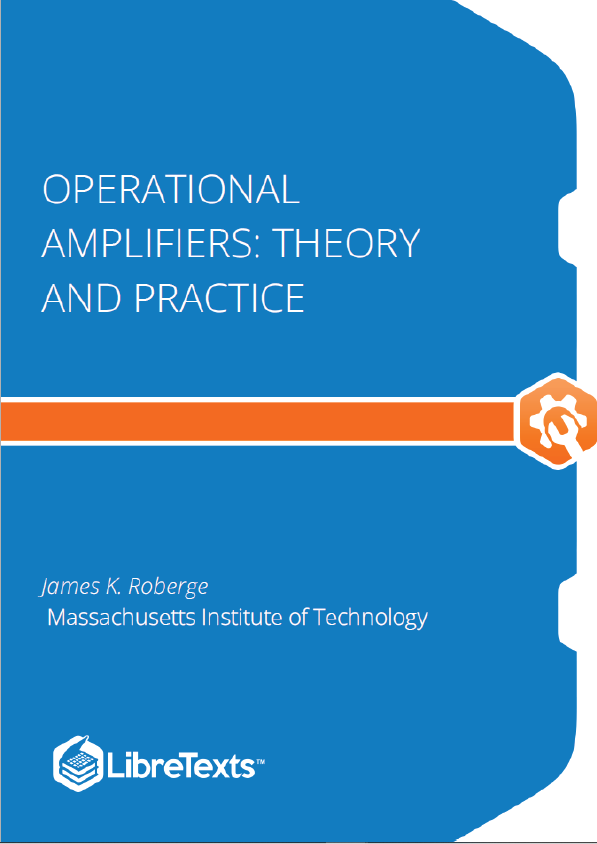An operational amplifier is a high-gain direct-coupled amplifier that is normally used in feedback connections. If the amplifier characteristics are satisfactory, the transfer function of the amplifier with feedback can often be controlled primarily by the stable and well-known values of passive feedback elements.
The term operational amplifier evolved from original applications in analog computation where these circuits were used to perform various mathematical operations such as summation and integration. Because of the performance and economic advantages of available units, present applications extend far beyond the original ones, and modern operational amplifiers are used as general purpose analog data-processing elements.
High-quality operational amplifiers(An excellent description of the technology of this era is available in G. A. Korn and T. M. Korn, Electronic Analog Computers, 2nd Ed., McGraw-Hill, New York, 1956. ) were available in the early 1950s. These amplifiers were generally committed to use with analog computers and were not used with the flexibility of modern units. The range of operational- amplifier usage began to expand toward the present spectrum of applications in the early 1960s as various manufacturers developed modular, solid-state circuits. These amplifiers were smaller, much more rugged, less expensive, and had less demanding power-supply requirements than their predecessors. A variety of these discrete-component circuits are currently available, and their performance characteristics are spectacular when compared with older units.
A quantum jump in usage occurred in the late 1960s, as monolithic integrated-circuit amplifiers with respectable performance characteristics evolved. While certain performance characteristics of these units still do not compare with those of the better discrete-component circuits, the integrated types have an undeniable cost advantage, with several designs available at prices of approximately $0.50. This availability frequently justifies the replacement of two- or three-transistor circuits with operational amplifiers on economic grounds alone, independent of associated performance advantages. As processing and designs improve, the integrated circuit will invade more areas once considered exclusively the domain of the discrete design, and it is probable that the days of the discrete-component circuit, except for specials with limited production requirements, are numbered.
There are several reasons for pursuing a detailed study of operational amplifiers. We must discuss both the theoretical and the practical aspects of these versatile devices rather than simply listing a representative sample of their applications. Since virtually all operational-amplifier connections involve some form of feedback, a thorough understanding of this process is central to the intelligent application of the devices. While partially under stood rules of thumb may suffice for routine requirements, this design method fails as performance objectives approach the maximum possible use from the amplifier in question.
Similarly, an appreciation of the internal structure and function of operational amplifiers is imperative for the serious user, since such information is necessary to determine various limitations and to indicate how a unit may be modified (via, for example, appropriate connections to its compensation terminals) or connected for optimum performance in a given application. The modern analog circuit designer thus needs to understand the internal function of an operational amplifier (even though he may never design one) for much the same reason that his counterpart of 10 years ago required a knowledge of semiconductor physics. Furthermore, this is an area where good design practice has evolved to a remarkable degree, and many of the circuit techniques that are described in following chapters can be applied to other types of electronic circuit and system design.











